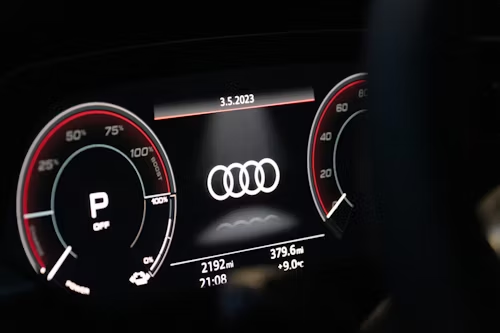The Mask of Tomorrow: Embracing Eco-Friendly Mobility and Smart Vehicle Conversions

Just like Jim Carrey's character in The Mask transformed into a green-faced whirlwind of energy, the automotive industry is undergoing its own dramatic makeover. This shift towards eco-friendly mobility, smart vehicle conversions, and future-proof cars is not just about keeping up with technology but about redefining the way we interact with our vehicles in a sustainable world.
Understanding Eco-Friendly Mobility
In the quest for a cleaner planet, eco-friendly mobility stands out as a pivotal trend. It's not just about reducing emissions but reshaping our transportation frameworks to be more harmonious with the environment.
The Core Components of Eco-Friendly Vehicles
Eco-friendly vehicles are the cornerstone of this movement, incorporating advanced technologies that help reduce carbon footprints.
Key Features of Eco-Friendly Vehicles:
- Electric Powertrains
- Renewable Energy Integration
- Enhanced Fuel Efficiency
- Biodegradable Materials
These features are crucial in crafting vehicles that are not only less harmful to the environment but also cost-effective in the long run.
Impact on Urban Planning
The integration of eco-friendly vehicles influences urban development, promoting more sustainable cityscapes.
Urban Design Shifts:
- Increased Electric Vehicle Charging Stations
- Bike-Friendly Infrastructure
- Expansion of Green Spaces
- Integration of Public Transport Systems
Such urban planning initiatives ensure that cities not only support eco-friendly mobility but thrive on it.
Smart Vehicle Conversions: A New Era
Transforming existing vehicles into smart, eco-conscious machines is a practice that’s gaining momentum. Like wearing a high-tech version of The Mask, these vehicles are upgraded to meet modern standards of efficiency and intelligence.
What Does Smart Conversion Involve?
Smart vehicle conversions revolve around upgrading key components of traditional cars to enhance their performance and sustainability.
Conversion Essentials:
- Battery Replacement with Advanced Alternatives
- Installation of Smart Sensors
- Software Upgrades for Enhanced Navigation
- Integration of Energy Management Systems
These enhancements breathe new life into older models, aligning them with current technological and environmental expectations.
Benefits of Converting Your Vehicle
Converting your vehicle isn’t just an investment in technology—it’s an investment in the future.
Advantages of Vehicle Conversion:
- Reduction in Emission Levels
- Increased Vehicle Longevity
- Improved Resale Value
- Lower Operating Costs
The practical benefits of smart vehicle conversions are clear, making it a wise choice for both the planet and your pocketbook.
The Future is Smart: Enhancing Vehicle Performance
As vehicles become more intelligent, their performance metrics evolve. The focus is not only on speed or power but on smarter, more efficient operation that complements the driver’s lifestyle.
Technologies Driving Smart Vehicle Performance
Innovative technologies are at the heart of enhancing vehicle performance in the digital age.
Technological Innovations:
- Autonomous Driving Features
- Real-time Data Analytics
- Cloud-based Vehicle Management
- Artificial Intelligence (AI) Integration
These technologies make driving less about manual control and more about seamless interaction with a vehicle’s ecosystem.
Performance Metrics Redefined
The metrics for measuring vehicle performance are shifting towards efficiency and sustainability.
New Performance Standards:
- Fuel Efficiency Ratings
- Emission Compliance
- Energy Consumption
- User Experience Satisfaction
With these revised metrics, vehicle performance is now measured by how well it aligns with both personal and environmental standards.
Future-Proof Cars: Ready for Tomorrow
Future-proof cars are designed to withstand technological and environmental shifts, ensuring longevity in an ever-evolving world.
Designing for Durability and Adaptability
Key design choices help these vehicles remain relevant over time, regardless of external changes.
Design Innovations:
- Modular Components for Easy Upgrades
- Adaptive Software Systems
- Materials Built for Longevity
- Sustainability Certifications
These design principles ensure that future-proof cars continue to serve users effectively, no matter what new technologies emerge.
Staying Ahead of the Curve
Keeping a vehicle current involves more than just occasional maintenance—it requires foresight and planning.
Strategies for Maintaining Relevance:
- Regular Software Updates
- Hardware Checks and Replacements
- Continuous Learning and Adaptation
- Engagement with Emerging Trends
By staying proactive, car owners can ensure their vehicles are always ready for the road ahead, much like keeping their own version of The Mask polished and ready for action.
Tags: Eco-friendly mobility, Smart vehicle conversions, Smart vehicle performance, Future-proof cars




